Disclosure: Please note that some links are affiliate links, and at no additional cost to you, we earn a commission if you make a purchase.
If you would like to support this website in some way, using these links will help do exactly that.
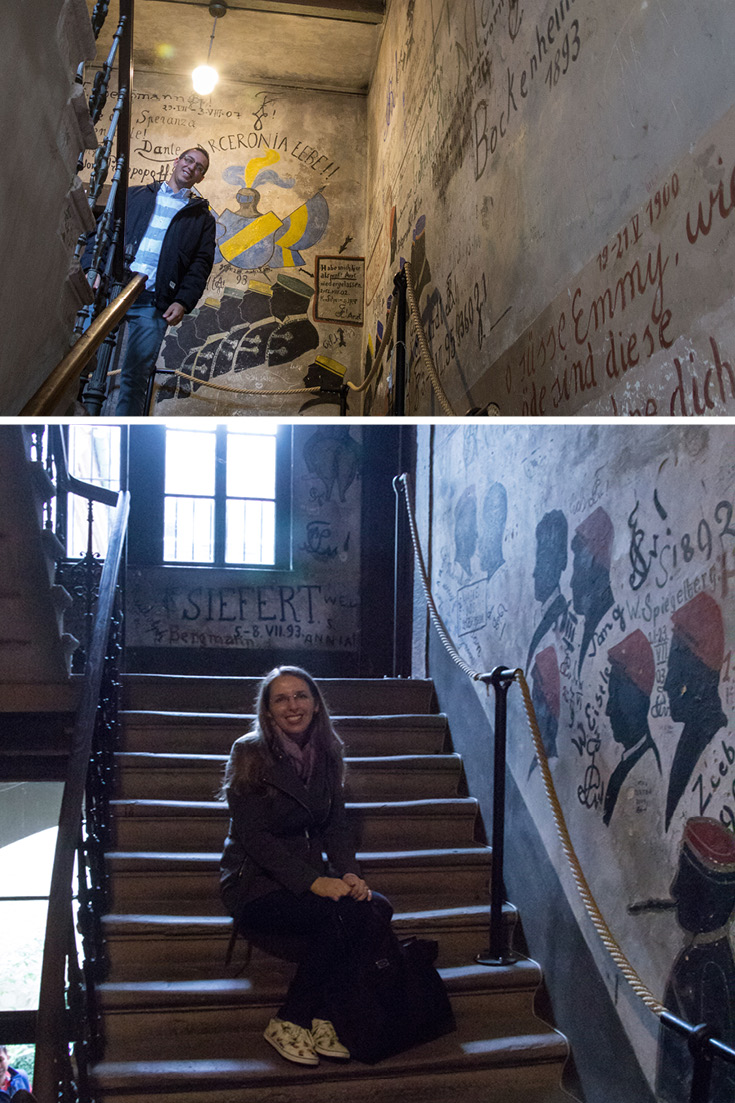
Studentenkarzer, Student Prison
On the back of Heidelberg’s Old University building lies the Studentenkarzer, which was a student prison. From 1778 to 1914, students were jailed in this building, being punished for trivial offenses such as nightly disturbances or public intoxication. At that time, the university still had its own jurisdiction so that an official could impose punitive punishment. The arrest lasted anywhere between three days to four weeks, depending on the offense.
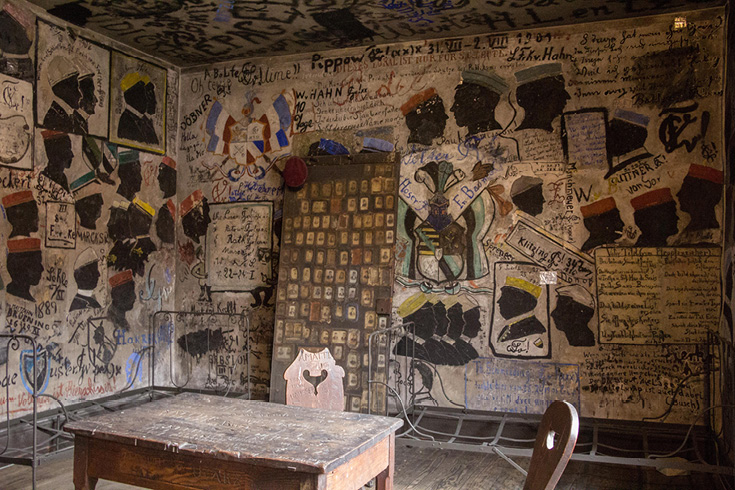
As you head up the worn and uneven stairs, you will see graffiti and art everywhere: on walls, above the doors, and even on the ceiling. Upstairs are five prison cells, big enough for two or three students to share a cell. During the first two days of confinement, students were only provided with bread and water. Starting day three, visitors could bring them food and even beer. Students were not allowed to leave the building during their sentence, but they were permitted to attend lectures for the university through a connecting door from the prison. In the end, the time spent in the Karzer was a lot more comforting than it sounds, since the cells were spacious, and had desks and regular beds in them.
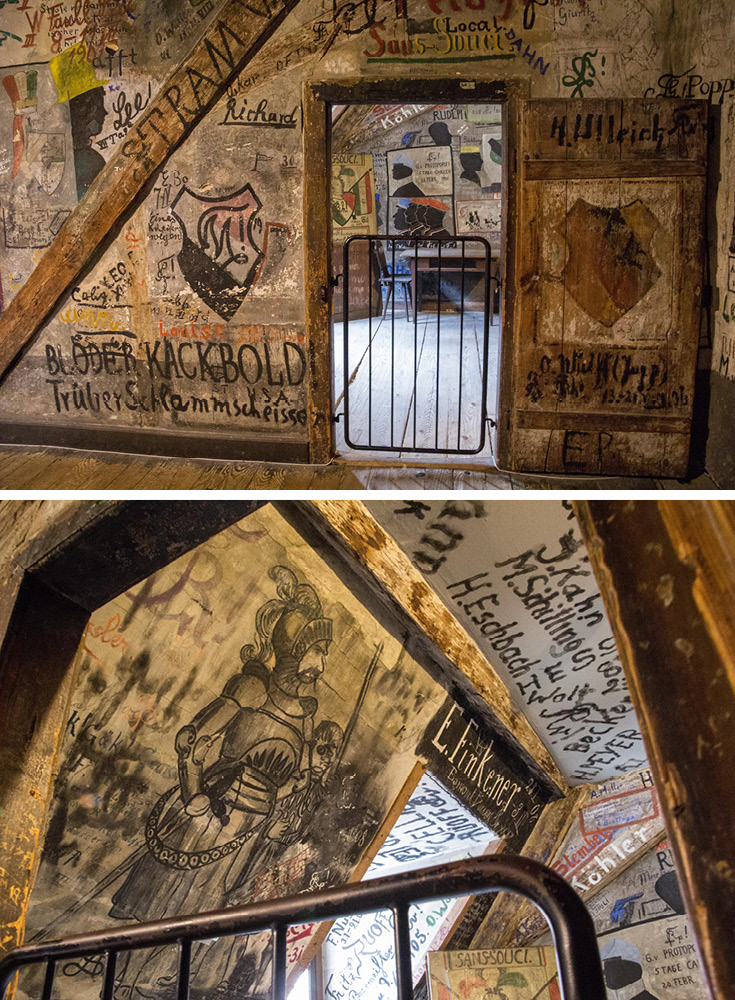
Many students spent their time immortalizing themselves on the walls with their faces, visions and the signs of their respective student connections. These original fixtures and graffiti can still be seen today. Even Mark Twain visited the Studentenkarzer and mentions it in his book, A Tramp Abroad; “The walls were thickly covered with pictures and portraits (in profile), some done with ink, some with soot, some with a pencil, and some with red, blue, and green chalks; and whenever an inch or two of space had remained between the pictures, the captives had written plaintive verses, or names and dates. I do not think I was ever in a more elaborately frescoed apartment.”
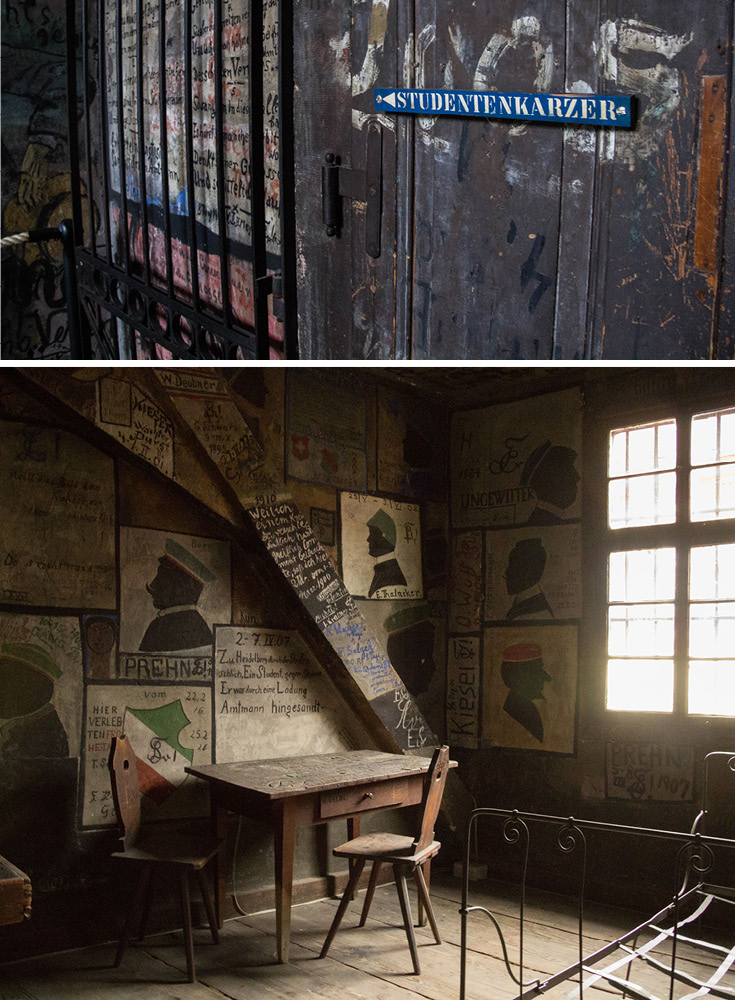
If you visit the student prison, buy a combined ticket, which will not only include admission to the student prison, but also to the University Museum and the Alte Aula, Old Auditorium. The museum will be of limited interest if you can't read German, but be sure not to miss the Alte Aula inside the museum. It is on the back side of the Studentenkarzer. Step out onto the cobblestone street and walk around the building to enter the museum.
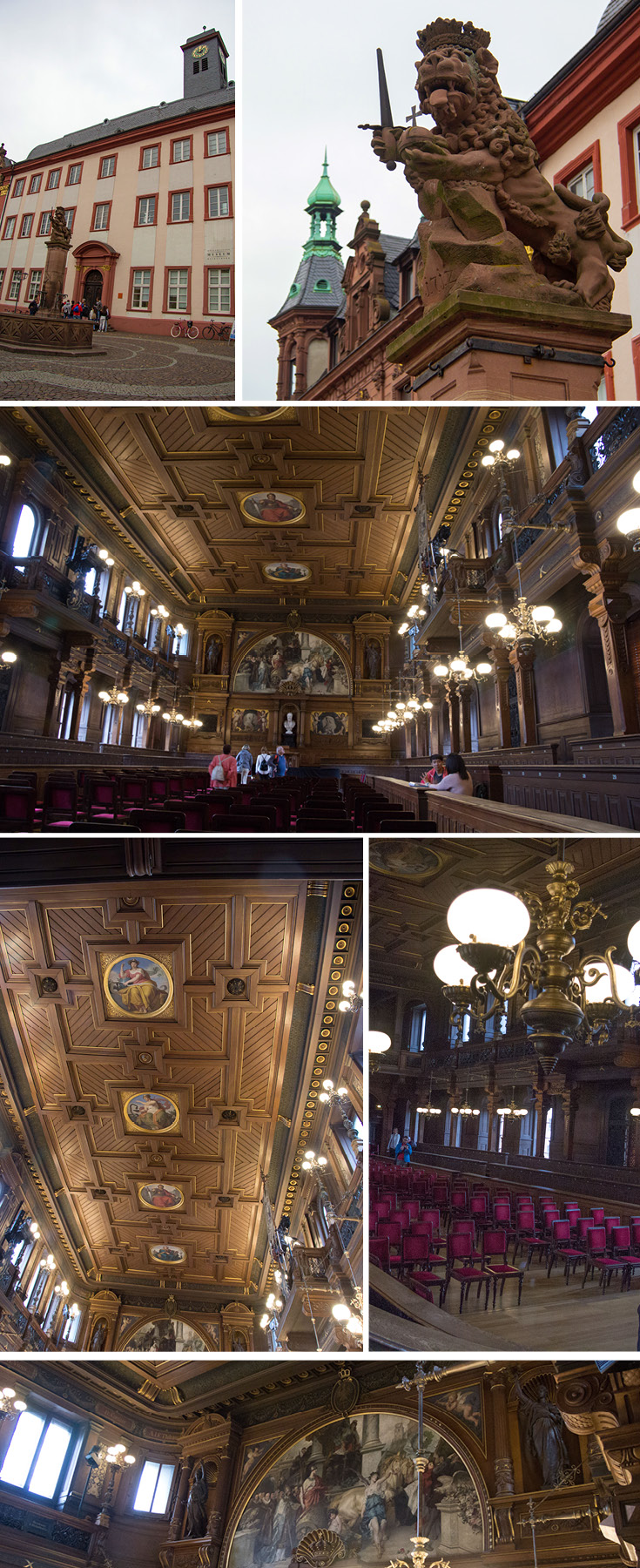
Alte Aula, Old Auditorium
After entering the museum, take the staircase one floor up and turn left into the hallway. On the right side of the hallway you can enter the Alte Aula. The interior of the auditorium - as it is still visible today - was designed for the 500th anniversary of the university in the year 1886. The architect Josef Durm created the neo-Renaissance style room, that was originally built in a baroque style. Today, this magnificent room is mainly used for academic ceremonies such as the opening lectures of newly appointed professors or graduate celebrations. The Alte Aula is also a venue for public concerts and lectures to give the venerable ambience of this auditorium a special glow.
Follow Along
If you enjoyed this article, or these topics sound interesting to you, you'll love our weekly newsletter. You'll receive the newest posts each week and exclusive access to free planning resources like ‘Packing List & Tips for 2 Weeks in Germany’ and ‘Everything You Need to Rent a Car in Germany’.
Thank you for reading!

